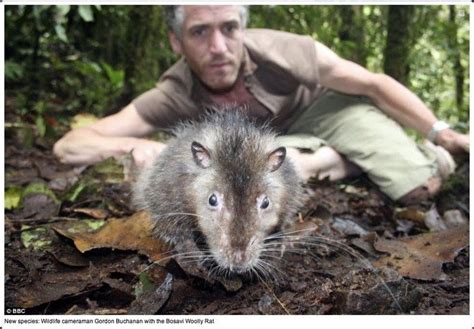
A group of teenagers has been apprehended in Arizona for allegedly smuggling undocumented migrants using vehicles disguised as official government vehicles, in what law enforcement officials are calling a “landmark” case due to its unusual sophistication. The operation involved modified SUVs resembling unmarked law enforcement cars, complete with realistic-looking emergency lights and sirens, aimed at evading detection while transporting migrants near the U.S.-Mexico border.
Arizona Authorities Dismantle Sophisticated Teen-Run Smuggling Ring
PHOENIX, AZ – A clandestine smuggling operation orchestrated by a group of teenagers has been shut down in Arizona, leaving law enforcement officials stunned by its level of sophistication. The scheme, which involved using vehicles meticulously disguised as unmarked law enforcement SUVs to transport undocumented migrants, was uncovered following a series of coordinated investigations. Authorities are hailing the case as a “landmark” moment, underscoring the evolving tactics employed by smuggling organizations and the increasing involvement of younger individuals in illicit activities along the U.S.-Mexico border.
The operation came to light after local and federal agencies received multiple reports of suspicious vehicles operating in the vicinity of the border. These vehicles, predominantly SUVs, bore a striking resemblance to unmarked law enforcement units, equipped with functional emergency lights, sirens, and even modified paint jobs to mimic official government vehicles. According to a statement released by the Arizona Department of Public Safety (AZDPS), “The level of detail and planning involved in this operation is unprecedented. These individuals went to great lengths to create vehicles that could easily pass as legitimate law enforcement, posing a significant risk to public safety and national security.”
The investigation culminated in a series of traffic stops and coordinated raids across several locations in southern Arizona. During these operations, authorities apprehended multiple individuals, including several teenagers believed to be the masterminds behind the smuggling ring. The ages of those involved have not been officially released but reports suggest that most were under the age of 19.
The scheme relied on the disguised vehicles to blend in with legitimate law enforcement traffic, enabling the smugglers to transport migrants across vast stretches of desert without attracting unwanted attention. The SUVs were equipped with advanced communication devices and GPS tracking systems, allowing the teenagers to monitor law enforcement activity and coordinate their movements in real-time.
“This wasn’t just a case of teenagers making a quick buck,” stated an anonymous source within the AZDPS involved in the investigation. “This was a highly organized and well-funded operation that had the potential to move a significant number of people across the border undetected. The sophistication of their tactics suggests they were either working under the guidance of more experienced criminals or had access to resources and training that are typically not available to ordinary teenagers.”
The discovery of the smuggling ring has raised concerns among law enforcement officials about the growing sophistication of smuggling operations and the increasing involvement of younger individuals in criminal activities. Experts believe that the lure of easy money and the promise of adventure are driving factors behind the trend. The investigation also highlights the challenges faced by law enforcement agencies in detecting and disrupting smuggling operations that employ increasingly sophisticated tactics.
“The cartels are constantly evolving their methods to evade detection,” explains Dr. Robert Bunker, an expert on transnational crime and border security. “They are always looking for new vulnerabilities to exploit, and they are not afraid to use teenagers or other vulnerable individuals to further their criminal enterprises. This case is a stark reminder of the need for law enforcement to remain vigilant and adapt to the changing tactics of smugglers.”
The apprehension of the teenage smugglers has been met with mixed reactions from the local community. While many residents have expressed relief that the operation has been shut down, others have voiced concerns about the underlying factors that lead young people to become involved in criminal activities.
“These kids are not inherently bad,” says Maria Rodriguez, a community organizer in Nogales, Arizona. “They are products of a system that has failed them. They lack opportunities, they lack hope, and they are often desperate to find a way to survive. We need to address the root causes of crime, such as poverty and lack of education, if we want to prevent young people from being drawn into these types of activities.”
Following the arrests, authorities seized several vehicles, communication devices, and a significant amount of cash. The migrants who were being transported in the disguised vehicles were taken into custody by U.S. Border Patrol and are currently undergoing processing. The teenagers involved in the smuggling ring are facing a range of federal charges, including conspiracy to commit human smuggling, transportation of undocumented aliens, and impersonating law enforcement officers.
The investigation into the smuggling ring is ongoing, and authorities are working to identify any other individuals who may have been involved in the operation. Law enforcement officials are also collaborating with intelligence agencies to determine the extent of the smuggling ring’s connections to larger criminal organizations.
“We are committed to dismantling these criminal networks and holding those responsible accountable for their actions,” said a spokesperson for the U.S. Attorney’s Office in Arizona. “We will continue to work closely with our law enforcement partners to protect our borders and ensure the safety and security of our communities.”
The case is expected to have significant implications for border security and law enforcement strategies. Experts predict that it will lead to increased scrutiny of vehicles operating near the border and a greater emphasis on identifying and disrupting smuggling operations that employ sophisticated tactics.
The Modus Operandi: Disguise and Deception
The effectiveness of the teenage smugglers’ operation hinged on their ability to convincingly mimic law enforcement vehicles. According to investigative reports, the group acquired SUVs and meticulously modified them to resemble unmarked law enforcement units. This involved:
- Exterior Modifications: The vehicles were painted in colors commonly used by law enforcement agencies, such as dark blue, gray, or black. Markings and decals that mimicked official government vehicles were added to further enhance the illusion.
- Emergency Lighting and Sirens: The SUVs were equipped with functional emergency lights and sirens, allowing the teenagers to pass as legitimate law enforcement vehicles. The lights were often strategically placed to resemble the lighting configurations used by specific law enforcement agencies.
- Communication Equipment: The vehicles were equipped with advanced communication devices, including radios and scanners, allowing the teenagers to monitor law enforcement activity and coordinate their movements in real-time.
- GPS Tracking Systems: GPS tracking systems were installed in the vehicles, enabling the smugglers to monitor their location and track the movements of law enforcement.
The meticulous attention to detail allowed the teenagers to operate with relative impunity for an extended period, transporting migrants across vast stretches of desert without attracting unwanted attention. The scheme was ultimately uncovered due to a combination of factors, including increased law enforcement patrols, tips from concerned citizens, and the teenagers’ own carelessness.
The Motives and Driving Forces
The reasons behind the teenagers’ involvement in the smuggling operation are complex and multifaceted. While the lure of easy money is undoubtedly a factor, experts believe that other forces may also be at play.
- Economic Hardship: Poverty and lack of economic opportunities are prevalent in many communities along the U.S.-Mexico border. Teenagers from these communities may be drawn to smuggling as a way to earn money and support their families.
- Lack of Education and Opportunity: Limited access to education and job training can also contribute to the problem. Teenagers who lack the skills and qualifications needed to find legitimate employment may be more likely to turn to crime.
- Desire for Adventure and Excitement: Some teenagers may be drawn to smuggling simply for the thrill of it. The lure of adventure and the promise of easy money can be particularly enticing for young people who are bored or dissatisfied with their lives.
- Influence of Peer Pressure: Peer pressure can also play a significant role. Teenagers may be pressured by their friends or family members to become involved in smuggling, even if they know it is wrong.
- Exploitation by Criminal Organizations: In some cases, teenagers may be exploited by criminal organizations. These organizations may recruit young people and use them to carry out smuggling operations, often promising them money or other rewards.
Addressing these underlying factors is crucial to preventing young people from becoming involved in criminal activities. This requires a multi-faceted approach that includes:
- Investing in Education and Job Training: Providing young people with access to quality education and job training can help them develop the skills and qualifications they need to find legitimate employment.
- Creating Economic Opportunities: Creating jobs and economic opportunities in border communities can help reduce poverty and provide young people with a sense of hope for the future.
- Strengthening Families and Communities: Strengthening families and communities can provide young people with the support and guidance they need to make positive choices.
- Raising Awareness of the Dangers of Smuggling: Educating young people about the dangers of smuggling can help them avoid becoming involved in criminal activities.
- Increasing Law Enforcement Efforts: Increasing law enforcement efforts can help deter smuggling and hold those responsible accountable for their actions.
The Broader Context: Border Security and Smuggling Operations
The case of the teenage smugglers highlights the ongoing challenges faced by law enforcement agencies in securing the U.S.-Mexico border. Smuggling operations are becoming increasingly sophisticated, and criminal organizations are constantly evolving their tactics to evade detection.
According to U.S. Customs and Border Protection (CBP), there were over 1.7 million encounters with migrants at the U.S.-Mexico border in fiscal year 2021, the highest number on record. The vast majority of these migrants were seeking asylum or economic opportunities in the United States. However, a significant number were also being smuggled across the border by criminal organizations.
These organizations are involved in a wide range of illicit activities, including human smuggling, drug trafficking, and weapons smuggling. They often operate with impunity, exploiting vulnerable individuals and profiting from their desperation.
The U.S. government has invested billions of dollars in border security in recent years, including the construction of new fencing, the deployment of additional Border Patrol agents, and the implementation of advanced surveillance technologies. However, these efforts have not been entirely successful in deterring smuggling.
Experts believe that a more comprehensive approach is needed, one that addresses the underlying factors that drive migration and smuggling. This includes:
- Addressing the Root Causes of Migration: Addressing the root causes of migration, such as poverty, violence, and lack of economic opportunities, can help reduce the flow of migrants to the U.S.-Mexico border.
- Strengthening Border Security: Strengthening border security can help deter smuggling and prevent criminals from crossing the border.
- Enhancing International Cooperation: Enhancing international cooperation can help disrupt smuggling networks and hold those responsible accountable for their actions.
- Providing Humanitarian Assistance: Providing humanitarian assistance to migrants and asylum seekers can help ensure their safety and well-being.
- Reforming Immigration Laws: Reforming immigration laws can help create a more orderly and humane system for processing migrants and asylum seekers.
The case of the teenage smugglers serves as a stark reminder of the complex challenges faced by law enforcement agencies in securing the U.S.-Mexico border. It also underscores the need for a comprehensive approach that addresses the underlying factors that drive migration and smuggling.
FAQ: Teenage Smuggling Ring Busted in Arizona
Q1: What exactly did these teenagers do to be considered smugglers?
A1: The teenagers allegedly operated a smuggling ring using vehicles disguised as unmarked law enforcement SUVs. They modified the vehicles with realistic-looking emergency lights, sirens, and paint jobs to resemble official government cars, allowing them to transport undocumented migrants undetected near the U.S.-Mexico border.
Q2: Why are law enforcement officials calling this a “landmark” case?
A2: Law enforcement is calling it a “landmark” case because of the sophistication and ingenuity involved in the operation. The teenagers’ ability to convincingly mimic law enforcement vehicles and coordinate their movements with advanced communication devices and GPS tracking systems is considered unprecedented, especially given their age. This also highlight a concerning trend involving younger individuals in illicit activities along the U.S.-Mexico border.
Q3: What are the potential charges these teenagers could face?
A3: The teenagers are facing a range of federal charges, including conspiracy to commit human smuggling, transportation of undocumented aliens, and impersonating law enforcement officers. The specific charges and potential penalties will depend on the extent of their involvement in the operation and the severity of their actions.
Q4: What happens to the migrants who were being transported in these disguised vehicles?
A4: The migrants who were being transported in the disguised vehicles were taken into custody by U.S. Border Patrol. They are currently undergoing processing, which may include interviews, background checks, and potential deportation proceedings, depending on their individual circumstances and asylum claims.
Q5: What measures are being taken to prevent similar incidents in the future?
A5: Law enforcement agencies are increasing scrutiny of vehicles operating near the border and enhancing efforts to identify and disrupt smuggling operations that employ sophisticated tactics. They are also working to address the underlying factors that lead young people to become involved in criminal activities, such as poverty, lack of education, and exploitation by criminal organizations. This includes investing in education and job training programs, strengthening families and communities, and raising awareness of the dangers of smuggling. Furthermore, they are working on strengthing border security, enhancing international cooperation and reforming immigration laws.
Long-term Impact and Considerations
The bust of the teenage smuggling ring in Arizona presents a multifaceted array of long-term impacts and considerations that extend beyond the immediate apprehension and prosecution of the individuals involved. It necessitates a deeper exploration of the socioeconomic, law enforcement, and policy implications that ripple outwards from this event.
From a socioeconomic perspective, the case throws light on the vulnerabilities that make young individuals susceptible to involvement in criminal activities, particularly in regions bordering international boundaries. Factors such as economic hardship, lack of educational opportunities, and the lure of quick financial gain can create an environment ripe for exploitation by sophisticated criminal networks. This incident underscores the need for targeted interventions aimed at addressing these underlying issues, including investments in education, job training programs, and community development initiatives that offer viable alternatives to illicit activities. Furthermore, examining the role of familial and community structures in either preventing or enabling such involvement is critical. Understanding the social dynamics that influence these teenagers’ decisions can inform more effective prevention strategies.
In terms of law enforcement, the case highlights the ever-evolving tactics employed by smuggling organizations and the challenges that authorities face in keeping pace. The sophistication of the teenage smugglers’ operation, involving the use of meticulously disguised vehicles and advanced communication technologies, underscores the need for law enforcement agencies to adopt a proactive and adaptive approach. This includes investing in advanced surveillance technologies, enhancing intelligence gathering capabilities, and fostering greater collaboration among local, state, and federal agencies. Moreover, it necessitates a shift in mindset towards recognizing that criminal enterprises are not monolithic entities but rather complex networks that can adapt and innovate rapidly. Training law enforcement personnel to identify and disrupt these evolving tactics is crucial for maintaining border security and preventing future incidents.
The case also has significant policy implications, particularly regarding immigration enforcement and border security strategies. The fact that teenagers were able to successfully operate a smuggling ring for an extended period raises questions about the effectiveness of current border security measures and the need for policy reforms. This includes exploring alternative approaches to border enforcement that prioritize intelligence-driven operations, targeted interventions, and collaboration with local communities. Additionally, it necessitates a re-evaluation of immigration policies to address the root causes of migration and reduce the demand for smuggling services. This may involve expanding legal pathways for migration, providing humanitarian assistance to asylum seekers, and addressing the economic and social conditions that drive individuals to seek opportunities in other countries.
Moreover, the case has implications for juvenile justice policies and the rehabilitation of young offenders. While it is essential to hold these teenagers accountable for their actions, it is also crucial to recognize that they are still developing and capable of rehabilitation. This necessitates a balanced approach that combines punishment with opportunities for education, counseling, and skill-building. The goal should be to reintegrate these individuals back into society as productive and law-abiding citizens, rather than simply warehousing them in the criminal justice system.
The long-term impacts of the teenage smuggling ring bust also extend to the broader community, affecting public perceptions of border security, immigration, and law enforcement. The incident may fuel xenophobia and anti-immigrant sentiment, particularly among those who view border security as a zero-sum game. It is essential to counter these narratives by promoting accurate information about immigration and border security, emphasizing the economic and social contributions of immigrants, and fostering greater understanding and empathy among different communities.
In conclusion, the bust of the teenage smuggling ring in Arizona presents a complex and multifaceted array of long-term impacts and considerations that demand a comprehensive and nuanced response. Addressing the underlying socioeconomic vulnerabilities, adapting law enforcement strategies, reforming immigration policies, and promoting community cohesion are all essential for preventing future incidents and ensuring the safety and security of the border region. The incident serves as a stark reminder that border security is not merely a matter of physical barriers and enforcement personnel but rather a complex interplay of social, economic, and political factors that require a holistic and collaborative approach.
The investigation also brought to light the potential for exploitation of vulnerable individuals, especially teenagers, by larger criminal organizations. The promise of quick money and a life of adventure can be a powerful lure for young people struggling with poverty and a lack of opportunities. This highlights the importance of community-based programs that offer alternative pathways for youth, such as job training, mentorship, and educational support. Additionally, efforts to raise awareness among young people about the risks and consequences of involvement in criminal activities are crucial.
Furthermore, the case underscores the need for greater collaboration between law enforcement agencies and community organizations to address the root causes of crime and prevent future incidents. Community organizations can provide valuable insights into the social and economic conditions that contribute to criminal activity and can help develop targeted interventions that address these issues. Law enforcement agencies can work with community organizations to build trust and improve communication, which can lead to more effective crime prevention strategies.
The involvement of teenagers in this sophisticated smuggling operation also raises questions about the role of technology in facilitating criminal activity. The teenagers were able to use advanced communication devices, GPS tracking systems, and social media platforms to coordinate their movements, recruit new members, and evade detection. This highlights the need for law enforcement agencies to stay ahead of technological advancements and develop strategies for combating cybercrime and the use of technology in criminal enterprises.
Additionally, the case underscores the importance of addressing the demand for smuggling services. As long as there is a demand for undocumented migration, criminal organizations will continue to profit from smuggling people across the border. Addressing the root causes of migration, such as poverty, violence, and lack of economic opportunities, can help reduce the demand for smuggling services and undermine the business model of criminal organizations.
In addition to these considerations, the case has implications for international relations, particularly between the United States and Mexico. The incident may strain relations between the two countries, especially if it is perceived that Mexico is not doing enough to prevent smuggling operations from originating within its borders. It is essential for the two countries to work together to address the root causes of migration, disrupt smuggling networks, and ensure the safety and security of the border region.
The investigation into the teenage smuggling ring is ongoing, and authorities are working to identify any other individuals who may have been involved in the operation. It is possible that the investigation will lead to further arrests and the discovery of additional smuggling networks. The long-term impact of the case will depend on the outcome of the investigation and the steps that are taken to address the underlying issues that contributed to the incident.
In the wake of this case, it is crucial for policymakers, law enforcement agencies, community organizations, and individuals to come together to address the challenges posed by border security and smuggling operations. By working together, we can create a safer and more secure border region for all.









